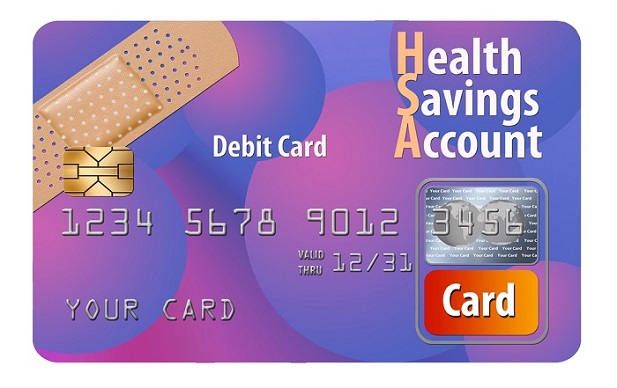 Brokers: Is it safe to say that, given the tremendous growth of high deductible health plans (HDHPs) that are paired with health savings account (HSAs), many of your clients have adopted these health care plans for their organizations hoping that their employees see that value in their flexibility?
Brokers: Is it safe to say that, given the tremendous growth of high deductible health plans (HDHPs) that are paired with health savings account (HSAs), many of your clients have adopted these health care plans for their organizations hoping that their employees see that value in their flexibility?
And benefits managers: How was implementing the HDHP with an HSA plan? Did employees adopt the plan with excitement, or was there angst or resistance because it was something new, different, and scary?
Our guess is the change resulted in mixed results. As more and more employers offer HDHPs paired with HSAs, there is a perception among employees that you can no longer have a quality health care plan that is also affordable. Employees falsely believe that you need to compromise one for the other. Because of this belief, employees continue to be confused about HDHPs and HSAs and how to effectively use them.
As brokers and benefits managers, you can begin to change this perception.
How to shift behavior when it comes to health care consumerism
Although many HSA administrators are eager to educate and encourage account holders to become savers – those who save more than they spend from the account – the reality is that many Americans are HSA spenders. They are people who use their accounts to pay for health care expenses as they occur because they must. Whether it's a chronic illness, medical costs associated with kids, or limited income, there's a reason they aren't saving more.
We need to change our thinking about HDHPs and HSAs if we want to help employees make better spending choices and access health care in the right ways. The challenge is that few Americans are wealthy enough to contribute a portion of their paycheck for a hypothetical health care need later in life. The 2018 Year-End Devenir HSA research report states that of the $34 billion dollars in HSA contributions, $26 billion dollars were withdrawn, meaning three-quarters of the total dollars put into an HSA are spent.
So why do we continue to categorize HSAs as savings accounts and design products aimed at savers when the majority of account holders use them to spend, and the potential to improve the health care experience is greater if we focus on the needs of spenders? Because most HSA administrators are banks – publicly owned institutions that are chartered to focus on assets under management, and have a strong interest in catering to savers and investors. If we want to change the way our employees see HSAs, we need to begin to equip them with the tools to understand how to maximize their accounts.
Using an HSA to pay for health care now
Spenders are more likely to engage with the health care system. Unless they're using their HSA to buy asprin, sunscreen, and first aid kits in bulk, it's a safe bet that an account holder who spends from an HSA is a consumer of health care services. Active health care consumers play an important part in improving health care in America. By focusing on them and offering support around the health care decisions they make with both health care providers and around health care costs, we can begin to change the perception that a HDHP, accompanied with an HSA, cannot be both high quality and highly affordable. As with most industries, the educated and informed buyer pushes providers to be competitive and transparent, bringing costs down.
Another reality is that educated and informed spenders can save employers money. Insurance premiums are typically dependent on how much an employee population will cost the insurance company. By encouraging employees to pay attention to the cost of health care and select providers and services with the highest value, employers can improve their rate. Likewise, by encouraging both savers and spenders to contribute to their HSA, employers can lower their taxable payroll. But even if an employee can't proactively contribute to an HSA, they can still save on their own taxes by first depositing their out-of-pocket cost for a medical bill into their HSA when they are ready to pay the bill, then paying the provider from an HSA.
Empowering employees
So how do we help employees become savvy HSA account holders? They need expert resources and support as they navigate their HDHP. Providing these resources for employees will empower them to lead their health care journey. Employers should encourage their employees to start a new health care conversation with their doctors, first by telling their doctors they're on a HDHP before making decisions about care. This allows providers to advise on the best care options, in addition to empowering employees to continue the conversation with their doctors.
Equipping employees with additional health care tools can have immediate cost saving benefits for employees. For example, employers can communicate that health care providers offer a 24-hour nurse line as a low- or no-cost source of information. Similarly, employees can use virtual or online health care options for common ailments as an inexpensive alternative to costly urgent care visits.
To put it bluntly, employees have options, but don't always view health care that way. The choices that an employee makes can have a huge impact on health care costs. By reminding employees they can consume health care in the same way they consume other things in their life – by knowing their options and shopping for the best value – they begin to shift they way they view health care. We must equip employees with resoures on how to lead conversations with their doctors so that when their physician recommends a new medical treatment, they are comfortable asking whether the treatment is necessary, if there are alternative options and the cost of the proposed treatment. As employees begin to lead these conversations, they can avoid unnecessary health care expenses and better prepare for future health care expenses. And on the flip side, they can ask about preventative options that can be taken now that will reduce costs down the line.
Decision support tools help guide employees to the right care for them, with the best price option. Similarly, many health care providers also have resources to compare services, giving employees the peace of mind that they are not sacrificing quality for a lower price.
Until we shift the misconception that the value of an HSA is a long-term saving mechanism, we are not serving the majority of consumers who are looking for resources to make their health care options more affordable now. The more resources we can provide to benefits managers and members, the more confident and empowered employees are to take ownership of their health care and seek out the best options.
Matt Marek is Chief Executive Officer and President of Further, a national leader in health spending and savings account administration dedicated to guiding account holders across the U.S. in saving and spending wisely on their health care. Further serves large corporations, small businesses, labor unions, retirees, and groups in the public sector by providing health savings accounts (HSAs), flexible spending accounts (FSAs), health reimbursement arrangements (HRAs), voluntary employee beneficiary association (VEBA) accounts and commuter benefit services. Visit hellofurther.com for more information.
© 2025 ALM Global, LLC, All Rights Reserved. Request academic re-use from www.copyright.com. All other uses, submit a request to [email protected]. For more information visit Asset & Logo Licensing.







